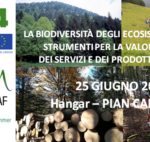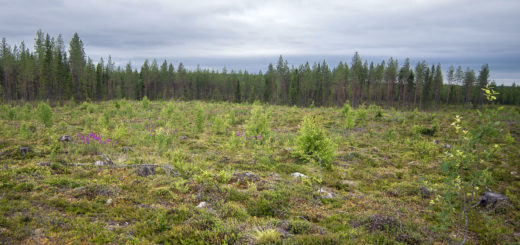COST Action FP1403
Non-Native Tree Species for European Forests: EXperiences, Risks and OpporTunities (NNEXT)
In November 2014, COST Action NNEXT was officially launched for a period of four years. Here you will find a short overview of objectives and activities of the Action.
Why are non-native forest tree species important?
Today, issues of biomass production and carbon sequestration along with the question of whether these species could increase the adaptive capacity of forests to long-term climate change patterns have fuelled a growing interest in non-native forest tree species in Europe.
Their introduction to Europe dates back to the 17th and 18th century with initial plantings as ornamental trees in parks and arboreta, and later in forests, after enormous demands were being made on natural resources to sustain the on-going industrialization of Europe.
At the present, 8.1 million ha (or 5.2 %) of the total European forest area are covered with non-native tree species. 10 % of them are considered as invasive (EEA). Sitka Spruce and Eucalyptus have the highest share (each >1 Mill. ha), followed by Black locust and Douglas-fir (each 700.000 ha).
In order to determine their full potential, associated management options, risks and challenges in growing them within Europe, establishment of European communication platform allowing for discussions with stakeholder groups from within and beyond European borders is crucial.
Why work at the European level?
There are huge differences in knowledge on non-native forest tree species across European countries regarding the following aspects:
• Regional history
• Distribution range
• Legal implications
• Industrial importance
• Management practices
• Environmental concerns
• Economic relevance
• Public perception
What is the main goal?
Establishment of a multidisciplinary and open access network of experts for a state-of-the-art knowledge transfer on non-native tree species in European forest and in-depth analysis of the associated risk and challenges in growing these species within European forestry sector
What are the key four objectives?
1. Collecting, processing and harmonising existing information on non-native tree species distribution in Europe.
2. Assessing the introduction and distribution pathways of non-native species.
3. Collecting and analysis of Management practices in Europe including their economic outcome and public perception.
4. Exploring the ecological risks in particular the invasive behaviour of these tree species, their potential biotic and abiotic risks, and impact on biodiversity and ecosystem resilience.
What kind of activities is taking place?
Members of NNEXT COST Action hold regularly scheduled large and small international meetings, taking place 2-6 times a year. Researchers of participating countries are invited to apply for short term exchange visits to strengthen existing networks and foster collaboration between research institutions. Training Schools planned for 2016 and 2018 will provide training and education for young researchers to question critically the pros and cons of particular non-native tree species management practices in Europe.
For more information visit:
http://nnext.boku.ac.at/
http://www.cost.eu/COST_Actions/fps/FP1403
Are you interested to join us?
Contact: [Name, Institution and email address of local MC members /MC substitutes]
segnalato da Maria Cristina Monteverdi
Info Autori
Scuola di scienze Agrarie, Forestali, Alimentari e Ambientali (SAFE-UNIBAS)







